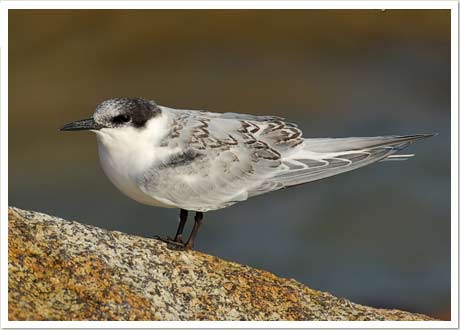|
| Roseate Tern |
PHOTO: 1 2 |
 |
|
 |
 |
| The federally endangered Roseate Tern is present from May until September and may have recently, once again, begun nesting in the Common Tern colony. The breeding range of Roseate Terns in the United States is primarily limited to a few islands in the northeast. Scientists will continue to monitor Plymouth Beach for this endangered species. Look for Roseate Terns in flocks of Common Terns on the tidal flats or perched in the dunes of the Common Tern nesting colony. |
|
|